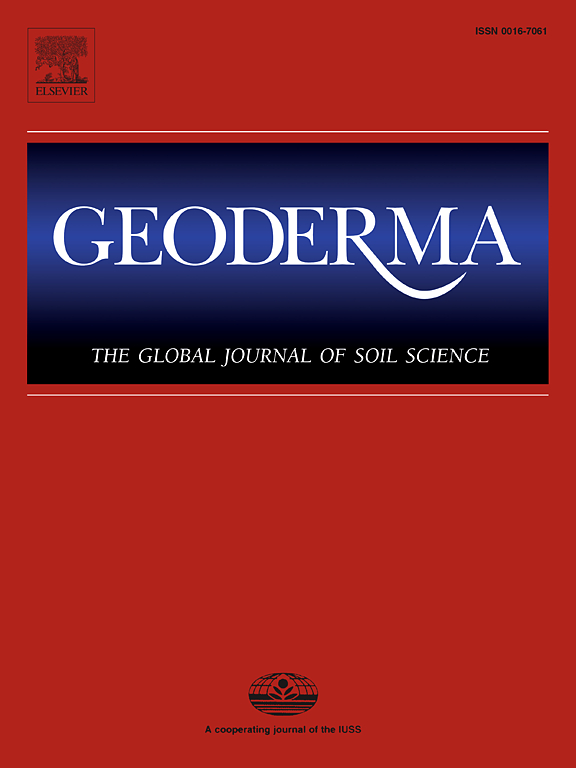Digital mapping of peat thickness and extent in Finland using remote sensing and machine learning
IF 5.6
1区 农林科学
Q1 SOIL SCIENCE
引用次数: 0
Abstract
Accurate data on peat extent and thickness is essential for managing drained peatlands and reducing greenhouse gas emissions. Machine learning-based digital soil mapping offers an effective approach for large-scale peat occurrence prediction. In this study, we present a workflow for producing peat occurrence maps for the whole of Finland. For this, we used random forest classification to map areas with peat thicknesses of ≥ 10 cm, ≥30 cm, ≥40 cm, and > 60 cm. The input data consisted of 3.5 million point observations and 188 feature rasters from various sources. We carefully split the reference data into training and test sets, allowing for independent and robust model validation. Feature selection included an initial screening for multicollinearity using correlation-based feature pruning, followed by final selection using a genetic algorithm. Feature importance was evaluated using permutation importance and SHAP values. The resulting models utilized 26–33 features, achieving overall accuracies and F1-scores between 86–95 % and 0.82–0.95, respectively. The most important features included soil wetness indices, terrain roughness indices, and natural gamma radiation. Additionally, we provided an approach for evaluating spatial prediction uncertainty based on the models’ internal prediction agreement. Compared to existing superficial deposit maps, our peat predictions significantly improve the spatial detail of peatlands at the national level, offering new opportunities for land use planning and emission mitigation. Our exceptionally comprehensive approach is broadly applicable, offering new insights into optimizing machine learning-based digital peatland mapping, particularly through refining feature selection to account for local conditions and enhance prediction accuracy.

求助全文
约1分钟内获得全文
求助全文
来源期刊

Geoderma
农林科学-土壤科学
CiteScore
11.80
自引率
6.60%
发文量
597
审稿时长
58 days
期刊介绍:
Geoderma - the global journal of soil science - welcomes authors, readers and soil research from all parts of the world, encourages worldwide soil studies, and embraces all aspects of soil science and its associated pedagogy. The journal particularly welcomes interdisciplinary work focusing on dynamic soil processes and functions across space and time.
 求助内容:
求助内容: 应助结果提醒方式:
应助结果提醒方式:


